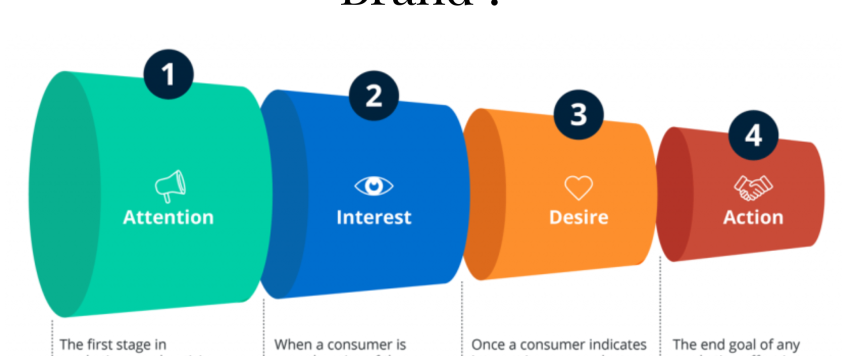-
27
Jan
What is AIDA Model in Theory and Practice?
AIDA model refers to the attention, Interest, Desire, and action acronym. Each letter is a stage in the customer journey, following a linear pattern.
Some call it the Hierarchy of Effects framework in marketing that moves from one stage to the next in the customer’s mind.
Using this framework, marketers have been successful in framing copies, emphasising the stages the customer goes through when buying the product.
Attention
It is the awareness of the product or service from a known or new brand. Consistent branding helps in forming deeper associations. Think colour combinations, font, and tone used in ad copies top brands such as Coca-Cola, McDonald’s, Domino’s, Nike, and Sony use.
Generating curiosity is vital at the attention stage when writing copies and blogs. The copy must first attract the audiences’ attention through its design. In case of blog writing, headlines are the first thing that the audience sees and decides whether they want to read them or not.
For brand videos on YouTube, the thumbnails and titles are the first details the audience sees.
It is important to consider the attention span of the audience today. Vital sources, including The Treetop Therapy and Cross River Therapy, mention the average attention span of humans is 8.25 seconds. Based on external stimuli, age and similar factors, the attention span can last between 2 seconds to twenty minutes.
Interest
The next stage in the AIDA framework is about generating interest about the product or service. In short, by showing the benefit to the audience, you can generate interest. The benefits alone should be persuasive.
Marketers at this stage must be able to distinguish among the needs, wants, and demands of the customer.
The description must address how the product can solve the pain point. It is the so-called hook that should align with what the customer wants.
Desire
Desire comes after generating interest in the AIDA framework. All in all, this stage should make the audience decide whether they want your brand’s offerings.
You have to encourage desire among your audience. If the copy you have written invites attention and the audience is interested, the goal is to make them perform an action.
The copy or content you write must transform their thinking into choosing you over your competitors. You can provide details on the product itself, and if they are already interested, they would want to know more about it.
Posting regularly on social media, writing informative blogs relevant to the product, and sending personalised emails, are today’s go-to methods.
Action
Next in line is the action.
The copies you write have a call-to-action (CTA) button, where you can know how the audience’s desire transforms into action.
The CTA can be considered a way to tell the audience that they should perform an action or respond to your message. It could be as simple as signing up for the email newsletter or visiting the landing page.
You can take this step even further for your audience. Providing discounts for performing an action, such as responding to a market survey, on the next product is one of the many ways.
source : www.naukri.com
Relevant Articles : BRAND SUCCESS STORIES, A MONOCHROME PACKAGE, VIDEO MARKETING, SHORT FORM VIDEOS, MARKETING
